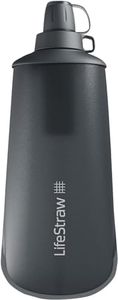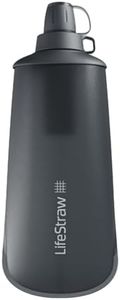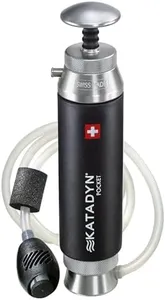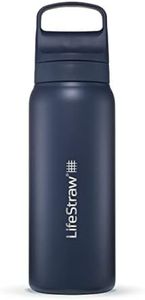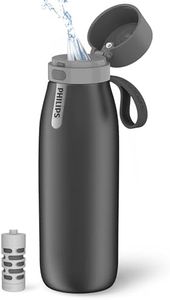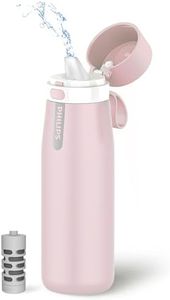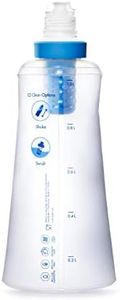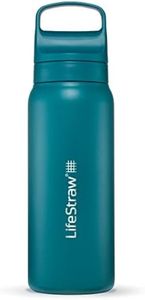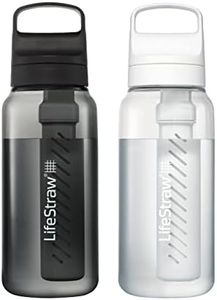We Use CookiesWe use cookies to enhance the security, performance,
functionality and for analytical and promotional activities. By continuing to browse this site you
are agreeing to our privacy policy
10 Best Water Filtration Bottles
From leading brands and best sellers available on the web.By clicking on a link to a third party's website, log data is shared with that third party.
Buying Guide for the Best Water Filtration Bottles
Choosing the right water filtration bottle can make a big difference in your daily hydration, especially if you travel, hike, or live in areas where water quality isn't always guaranteed. The best approach is to think about where and when you'll use your bottle, what you want to filter out of the water, and how often you'll need to refill or replace parts. By understanding a few key features, you can pick a bottle that keeps you hydrated and healthy in any situation.Filter TypeThe filter type determines what contaminants the bottle can remove, such as bacteria, protozoa, viruses, chemicals, or sediments. Some bottles have basic carbon filters that improve taste and reduce chlorine, perfect for city tap water. Others have advanced filters that protect against bacteria and protozoa, ideal for hiking or international travel. The most comprehensive filters also remove viruses, which is a must in regions with poor water sanitation. Think about where you'll drink from—only tap water, questionable fountains, or wild streams—then choose a filter that matches those needs.
Filter LifespanThis refers to how long the bottle’s filter will work before it needs replacement, usually measured in liters or gallons filtered. Shorter lifespans mean more frequent changes, which can be inconvenient if you use the bottle daily or on extended trips. If you plan to use the bottle often or on long adventures, a longer filter lifespan is beneficial. If you only need it for occasional trips or emergencies, a shorter lifespan may be sufficient.
Filtration SpeedFiltration speed is how fast water passes through the filter, affecting how quickly you can drink. Some bottles filter water as you sip, which can be slow and require some effort, while others let you filter a whole bottle at once. If you prioritize convenience and instant drinking, look for faster filtration; if you're okay with a slower pace in exchange for thorough filtration, a slower model might suffice. Your thirst level and patience can guide you here.
CapacityCapacity is the amount of water the bottle can hold, typically ranging from 12 to 32 ounces. Smaller bottles are lighter and easier to carry, good for short walks or commuting. Larger bottles hold more water, useful for hikes or places with fewer refill spots. Think about how much water you need between refills and how much weight you're willing to carry.
Bottle MaterialBottle material affects weight, durability, and taste. Plastic bottles are lightweight and often cheaper, but may retain flavors or odors. Stainless steel bottles are sturdy and can keep water cooler, but are heavier. Some people prefer glass for pure taste, though it's heavier and breakable. Choose material based on your portability, flavor, and durability preferences.
Ease of CleaningA bottle that’s easy to clean prevents buildup of mold and bacteria. Some designs come apart for thorough cleaning, while others may have areas that are hard to scrub. If you plan to use the bottle often or put anything besides water in it, look for a design that’s straightforward to take apart and clean, either by hand or in the dishwasher.
WeightThe weight of the bottle, especially when empty, matters for portability. Lighter bottles are easier to carry on a hike or in a bag, while heavier ones may offer more robust features like insulation or stronger filtration. If you'll be carrying the bottle all day, opt for the lightest practical option.


